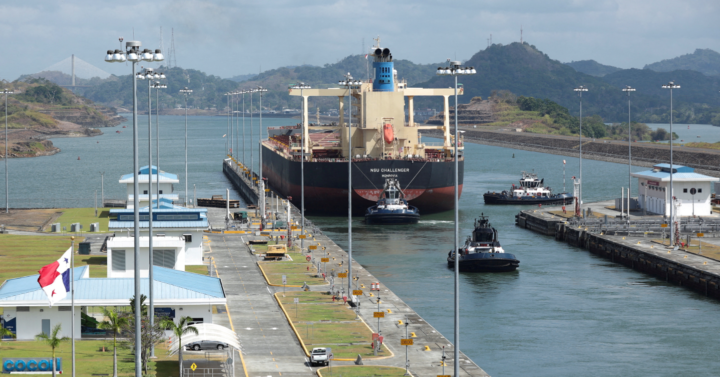Infostride News reported that the Nigeria Liquefied Natural Gas (NLNG) Limited recently attributed the surge in liquefied petroleum gas (LPG), commonly known as cooking gas, to vessel scarcity resulting from restrictions at the Panama Canal. The company highlighted that this, coupled with factors such as oil prices and foreign exchange crises, has led to an escalation in the cost of LPG.
According to Infostride News, the Panama Canal is grappling with an unprecedented drought, potentially intensified by El Nino and climate change. Gatun Lake, a crucial water source for the canal, is experiencing record-low water levels, leading to progressively stricter restrictions on ship transits. This situation has given rise to increased shipping costs, which subsequently impact the end users of LPG.
The drought, intensified by El Nino and climate change, has led to Gatun Lake recording levels below 80 feet. El Nino’s warming effects on the Pacific Ocean exacerbate the drought, while global sea surface temperatures hit a record high in 2023, contributing to the crisis. In response, the Canal Authority has tightened restrictions on ship transits due to water scarcity, reducing average daily transits from 32 to 31 ships from November 1, with further decreases anticipated in the coming months.

Analysts warn of potential long queues causing higher freight costs, as ship operators may charge more or opt for longer routes due to limited canal access. The restriction timeline indicates a gradual decrease in daily transits, from 31 in November to 18 by February 1, 2024. The Panama Canal has also implemented additional water-saving measures, such as water reuse, simultaneous crossings, and schedule optimization, to address the prolonged drought and ensure efficient canal operations.
Natural gas analyst Kayode Oluwadare, speaking to Infostride News, emphasized the historical importance of the Panama Canal as a crucial maritime route for dry and wet cargo vessels. Since its completion in 1914, the 80-kilometer waterway has played a vital role in promoting international trade, especially between the United States and Asian countries, connecting the Atlantic Ocean and the Gulf of Mexico to the Pacific Ocean.
Oluwadare highlighted the impact on large oil and gas vessels, such as Very Large Gas Carriers (VLGC) and Very Large Crude Carriers (VLCC), with the water level at the Panama Canal dropping significantly in recent years due to drought. This has resulted in disruptions to the smooth passage of vessels, causing long queues and unusually long waiting times. The disruption at the Panama Canal has played a significant role in the rising LPG prices currently affecting Nigeria.
In the Nigerian context, the Panama Canal has been primarily used for transporting liquefied natural gas (LNG) from the NLNG’s Bonny facility to South American buyers since the plant’s commencement of operations between 1999 and 2000. Most LNG deliveries from Nigeria to South America operate on a cost, insurance, and freight (CIF) basis, while LPG is sold on a free-on-board (FOB) basis.
Despite the fact that imported LPG volumes may not necessarily come from locations around the Panama Canal, the congestion at the canal contributes to the scarcity of vessels needed for the transportation of commodities, including LPG. This, in turn, requires a premium to charter a vessel from the limited pool available for voyage charter, with the additional cost being passed on to end users in locations such as Lagos, Enugu, and Kaduna.
As the situation around the Panama Canal is not expected to improve in the short to medium term, Infostride News suggests that LPG prices will continue to rise. Other contributing factors include exchange rate volatility, uncertainty surrounding global crude oil prices (to which LPG prices are indexed), and high winter demand for LPG in Europe and parts of Asia. Nigerians are advised to brace themselves for record-high LPG prices between now and the end of 2023, with end users already experiencing refilling costs above N1,200 per kilogram.
With the yuletide season approaching and restrictions at the Panama Canal tightening, analysts project that cooking gas prices might reach up to N1500 per kilogram during Christmas. This adds to the challenges faced by consumers in a period marked by increased demand and global uncertainties, further highlighting the complex interplay of factors affecting the cost of LPG in Nigeria.
Support InfoStride News' Credible Journalism: Only credible journalism can guarantee a fair, accountable and transparent society, including democracy and government. It involves a lot of efforts and money. We need your support. Click here to Donate
